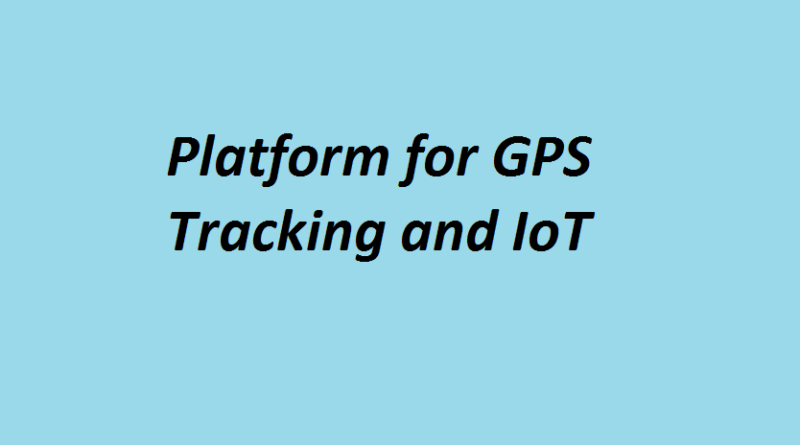Features That A Good GPS Tracking And IoT Platform Should Have
The Internet of Things (IoT) has rapidly evolved over the past few years, with more and more devices being connected to the internet every day. This has led to an explosion in the amount of data generated by these devices, which has led to a corresponding increase in the demand for platforms that can handle this data. One of the areas where this is particularly evident is in the field of GPS tracking, where IoT devices are being used to track the location and movements of vehicles, people, and even animals. In this article, we will explore the features and benefits of platforms for GPS tracking and IoT.
First, let’s start with the basics. A GPS tracking platform is a software application that allows users to track the location of GPS-enabled devices in real-time. These devices can include vehicles, smartphones, wearables, and even drones. The platform collects data from these devices and presents it in a user-friendly interface that can be accessed from anywhere with an internet connection.
The IoT aspect comes into play when we consider the types of data that can be collected by these devices. In addition to location data, IoT-enabled devices can collect a wide range of sensor data, including temperature, humidity, light levels, and more. This data can be used to provide insights into a wide range of applications, from fleet management to environmental monitoring to asset tracking.
Now, let’s take a closer look at the features that a good GPS tracking and IoT platform should have. First and foremost, it should be able to handle large volumes of data. With so many devices generating data constantly, the platform needs to be able to handle this data efficiently and reliably. This means that it should be able to scale up easily as the number of devices being tracked grows.
Secondly, the platform should be easy to use. Users should be able to access the data they need quickly and easily, without having to wade through complex menus or confusing interfaces. This means that the platform should have a simple, intuitive user interface that can be customized to meet the specific needs of each user.
Thirdly, the platform should be secure. With so much sensitive data being collected and transmitted, it is essential that the platform provides robust security features to protect this data. This means that the platform should use encryption to protect data in transit and at rest, and should have features such as two-factor authentication to ensure that only authorized users can access the data.
Fourthly, the platform should be flexible. Different users will have different needs and requirements, and the platform should be able to adapt to meet these needs. This means that the platform should have a range of customization options, including the ability to create custom reports and dashboards, and the ability to integrate with other software applications.
Finally, the platform should be cost-effective. With so many different platforms available on the market, it is essential that the platform provides good value for money. This means that the platform should be priced competitively and should offer a range of pricing options to meet the needs of different users.
So, what are some of the benefits of using a GPS tracking and IoT platform? First and foremost, it provides real-time visibility into the location and movements of assets. This can be invaluable for businesses that rely on fleets of vehicles or other assets to provide services to customers. By knowing exactly where these assets are at any given time, businesses can optimize their operations and improve efficiency.
Secondly, a GPS tracking and IoT platform can help businesses to improve safety and security. By monitoring the movements of assets in real-time, businesses can identify potential safety risks and take action to mitigate them. For example, if a vehicle is traveling too fast or taking an unusual route, the platform can alert the relevant authorities or managers to take action.
Thirdly, a GPS tracking and IoT platform can help businesses to improve their environmental performance. Yes, that’s correct. By collecting data on factors such as fuel consumption and emissions, businesses can identify areas where they can reduce their environmental impact. For example, a fleet management company could use data from GPS tracking devices to identify inefficient routes and optimize them to reduce fuel consumption and emissions. This can help businesses to not only reduce their carbon footprint but also save money on fuel costs.
Another way in which GPS tracking and IoT platforms can help businesses improve their environmental performance is by monitoring environmental conditions. For example, sensors can be used to monitor air quality, water quality, and noise levels in urban areas. This data can be used by city planners and policymakers to make more informed decisions about urban development and to identify areas where environmental regulations need to be strengthened.
In addition to these benefits, GPS tracking and IoT platforms can also help businesses to improve their customer service. By providing real-time information on the location and status of assets, businesses can provide more accurate estimates of delivery times and keep customers informed of any delays. This can help to improve customer satisfaction and loyalty.
Overall, GPS tracking and IoT platforms are becoming increasingly important for businesses that rely on the location and movement of assets to provide services to customers. With the ability to collect and analyze large volumes of data, these platforms provide businesses with valuable insights that can be used to improve efficiency, safety, environmental performance, and customer service. As IoT technology continues to evolve, we can expect to see even more innovative uses for GPS tracking and IoT platforms in the future.



